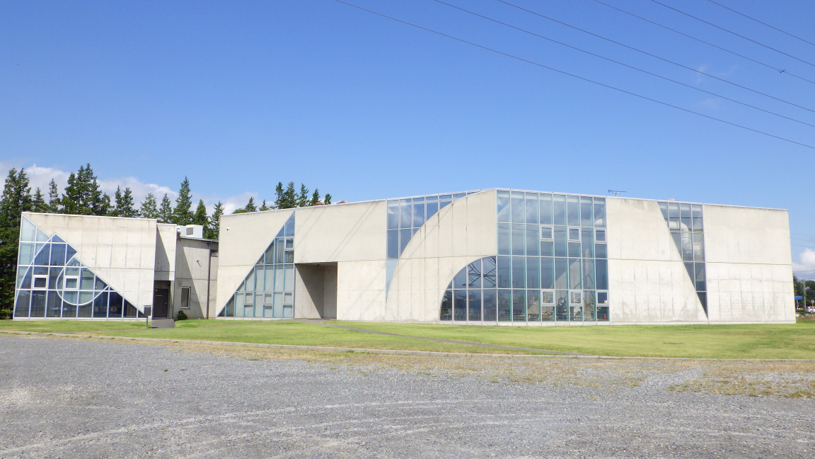by Sofia Carli, Anna Vassallo and Nisha Vianello, 1^IBDP, Pio X International - World Arts and Cultures (WAC)
- Q- Hello and nice to meet you! First of all, could you give us a short description of the museum and its story?
A- The Japan Ukiyo-e Museum was established in 1982 by Sakai Toukichi, the 10th generation of the Sakai family, to preserve, study and exhibit “the Sakai Collection”, a collection of Ukiyo-e woodblock prints. The Sakai family built a fortune as a paper wholesale merchant in the Matsumoto castle town during the late Edo period (1603~1868), and Sakai Heisuke, the 6th generation, started collecting Ukiyo-e. Since then, having been collected for 200 years, it has become a world class collection both in terms of quality and quantity.

- Q-What is your role at the Museum?
A- My name is Azusa Gomi and I am the Curator of the Japan Ukiyo-e Museum. I am planning exhibitions and researching works. At the exhibition, ukiyo-e prints are exchanged about one month to prevent fading due to light.
- Q- How many artworks do you have?
A- It is about 100,000 works including about 1,000 drawings (Hanging scroll, ink and color on silk or paper).
- Q- What are the most important prints you have in your museum?
A- There are some works. For example, one of the most important prints is Kitagawa Utamaro’s “Kiri no Musume”.
The title of this picture “Kiri no Musume” means a young woman at “Kiri-mise”, where low-ranked prostitutes worked in a small room of a row house within the pleasure district. The picture depicts a prostitute rejoicing naively on reading a letter seemingly from her lover. Using “Ōkubi-e (Large head picture; close-up bust portraits)” style, the depiction of her relaxed eyes and smile expresses her feeling vividly.
The same works can be found at the Guimet Museum in France, but there is only one known print in the world where the color of the kimono is purple.

- Q- In your museum, are there also the tools used to create woodblock prints?
A- Yes. We have a chisel and a sword for carving woodblocks, and Valen for printing.
- Q- What kind of interaction do you have with other cultures? (Are there exhibitions, exchange of artworks with other museums in the world?)
A- In 2017, we lent Katsushika Hokusai’s works to the National Gallery of Victoria in Australia. Works may be rented at the request of other museums.
(Detail: https://www.ngv.vic.gov.au/exhibition/hokusai/)
- Q- Why do you think woodblock prints influenced western artistic movements, such Impressionism, so much?
A- First, I think that the vivid colors seemed fresh in Europe at the time when dark colors were widely used. Also, in the composition, I think it was refreshing that the composition was not drawn according to the accurate perspective, sometimes on flat and sometimes emphasizing perspective. This is because the perspective expression in Japan at that time flexibly changed according to the motif that the painter wanted to draw.
- Q- What about contemporary artists? Are there new techniques or new famous artists that keep producing woodblock prints?
A- Some artists are influenced by ukiyo-e and create works. For example, Yayoi Kusama.
(Detail: https://www.adachi-hanga.com/modern/kusama2/index_en.html)
- Q- How would you define “the floating world” in which woodblock prints developed?
A- Traditionally, I think that the Japanese spirit has a sense of the evanescence of life that “everything changes.” In that spirit, “the floating world” has the meaning of positively accepting and enjoying the present in an unspecified world.
- Q- How can you understand a link with other fields of culture (e.g. poetry, music, theatre…) through the woodblock prints?
A- Ukiyo-e is closely related to other cultures of the same era. For example, “Yakusha-e” is a genre that depicts Kabuki actors and is related to performing arts. In addition, classical Japanese poems and kyoka (comic tanka poem) are often written in the works, and they are also related to literature.
- Q- What kind of perception do you have about woodblock prints nowadays? (Are woodblock prints still an expression of your world?)
A- I think that Ukiyo-e is recognized as a well-known work of art in the world, and also as a reference for learning about the life and culture of the common people in the Edo period (1603~1868).
- Q- How would you analyze Ukiyo-e?
A- Ukiyo-e played a role as a medium to convey the fashion of the time. It’s like a current magazine. It was a product that people could easily buy. It reflects the appearance of Kabuki actors who were popular at the time, fashion trends, and culture.
For example, Bijin-ga (portrait of a beautiful woman) often conveys the patterns of hairstyles and Kimonos that were popular at the time. Even in the same Edo period, it was sensitive to the various trends that were changing. Ukiyo-e transmitted them.
- Thank you very much you helped us travelling with our imagination! We really hope to hear from you soon!








Lascia un commento